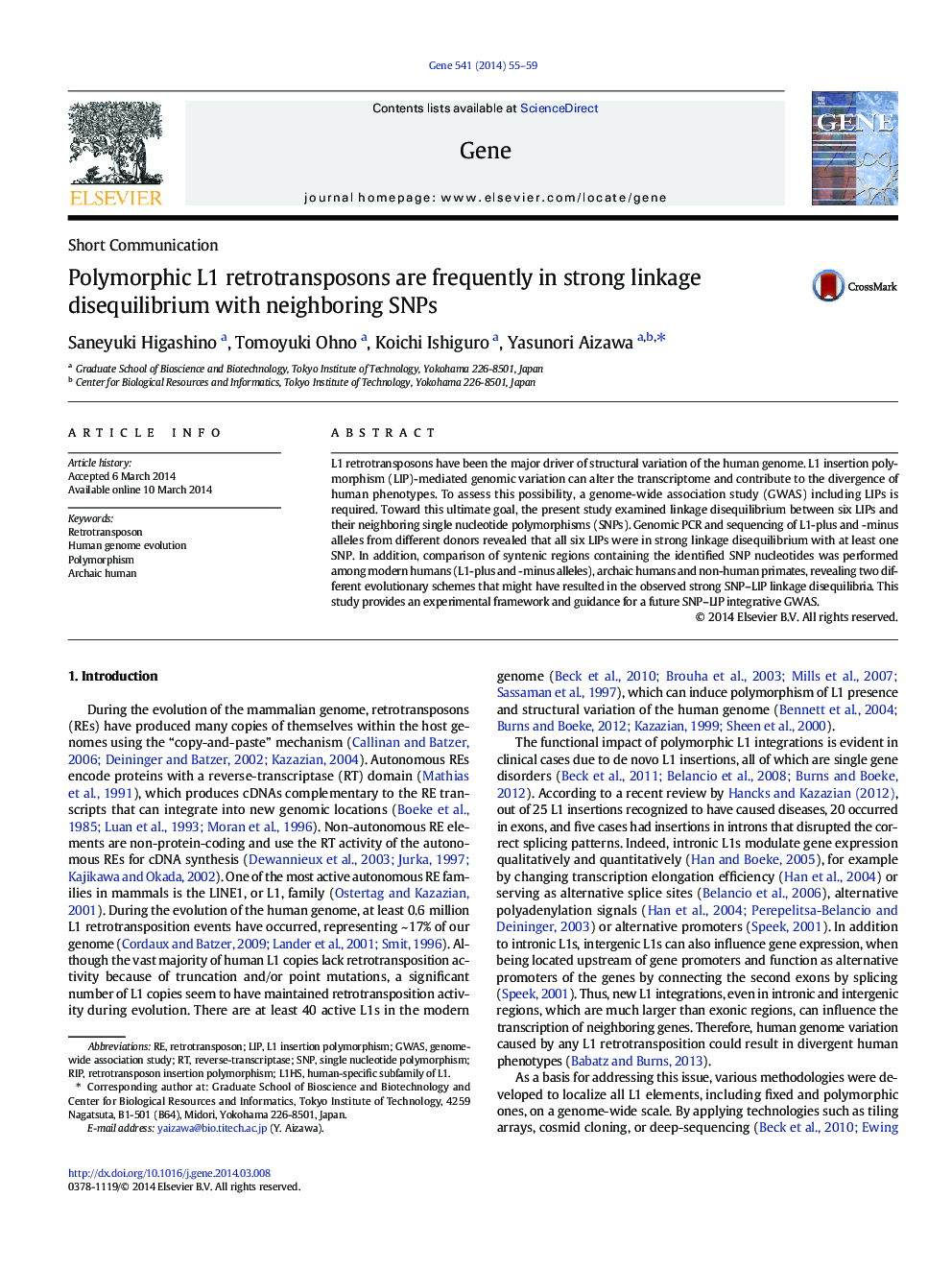| Article ID | Journal | Published Year | Pages | File Type |
|---|---|---|---|---|
| 2816392 | Gene | 2014 | 5 Pages |
•SNP typing of polymorphic retrotransposons in the human genome was performed.•All polymorphic L1s tested were in strong linkage disequilibrium with SNPs.•Some identified SNP-LIP haplotypes may originate from an admixture of archaic humans.
L1 retrotransposons have been the major driver of structural variation of the human genome. L1 insertion polymorphism (LIP)-mediated genomic variation can alter the transcriptome and contribute to the divergence of human phenotypes. To assess this possibility, a genome-wide association study (GWAS) including LIPs is required. Toward this ultimate goal, the present study examined linkage disequilibrium between six LIPs and their neighboring single nucleotide polymorphisms (SNPs). Genomic PCR and sequencing of L1-plus and -minus alleles from different donors revealed that all six LIPs were in strong linkage disequilibrium with at least one SNP. In addition, comparison of syntenic regions containing the identified SNP nucleotides was performed among modern humans (L1-plus and -minus alleles), archaic humans and non-human primates, revealing two different evolutionary schemes that might have resulted in the observed strong SNP–LIP linkage disequilibria. This study provides an experimental framework and guidance for a future SNP–LIP integrative GWAS.
